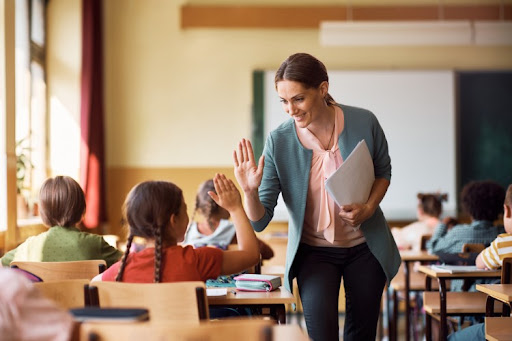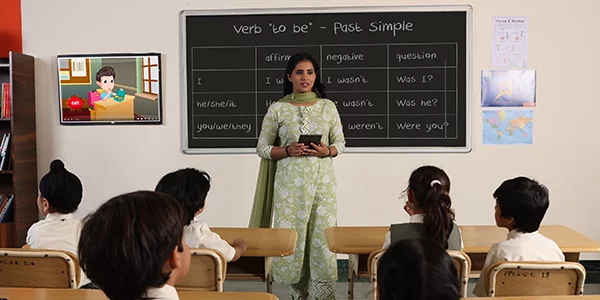Comprehensive Primary Science Tuition Singapore for Primary School Students
Comprehensive Primary Science Tuition Singapore for Primary School Students
Blog Article
Exploring the Various Mentor Approaches in Main Science Education And Learning Today
Inquiry-based knowing, hands-on experiments, and the combination of modern technology are redefining exactly how educators involve young minds. Furthermore, joint approaches and separated direction are being used to provide to the diverse needs of pupils, enhancing both interaction and understanding.
Inquiry-Based Understanding
Inquiry-Based Knowing (IBL) is an instructional strategy that urges pupils to check out clinical ideas with wondering about, examination, and hands-on trial and error. This technique emphasizes the duty of students as active participants in their knowing, promoting essential reasoning and analytical skills. By involving with real-world inquiries, pupils come to be motivated and curious, which boosts their understanding of scientific principles.
In IBL, instructors work as facilitators, assisting pupils as they browse their questions instead of delivering information directly. This student-centered technique allows for differentiation, suiting numerous finding out rates and styles. Pupils establish abilities in developing hypotheses, designing experiments, and evaluating information, which are vital for clinical literacy.
Additionally, IBL cultivates partnership among pupils, motivating them to share searchings for and ideas. This collective questions promotes social abilities and a sense of community within the classroom. The process of inquiry urges strength, as pupils find out to embrace failure as a stepping rock towards understanding.
Hands-On Experiments
Hands-on experiments are a vital component of reliable scientific research education, enhancing the concepts of inquiry-based learning. These experiments allow pupils to engage straight with scientific principles, cultivating a much deeper understanding with experiential learning. By adjusting products and observing outcomes, young students can comprehend abstract theories in concrete ways.
Such tasks promote critical thinking and analytical abilities, as trainees hypothesize end results, conduct experiments, and evaluate results. This procedure encourages them to ask inquiries, refine their understanding, and develop a scientific way of thinking. Additionally, hands-on experiments can be tailored to varied understanding styles, ensuring that all trainees have the possibility to engage meaningfully with the content.
Moreover, hands-on experiments commonly urge collaboration among peers, promoting teamwork and communication skills. Working in groups enables pupils to share concepts, talk about findings, and gain from each other, which boosts their general academic experience.
Incorporating hands-on experiments right into the main scientific research educational program not only enhances the discovering setting but likewise grows a lifelong rate of interest in science. By actively taking part in their education, pupils are extra most likely to create an enthusiasm for clinical questions that expands past the class.

Technology Assimilation
Integrating modern technology right into main science education and learning has actually ended up being increasingly vital in cultivating student engagement and improving discovering results. Using electronic devices, such as interactive simulations, digital laboratories, and instructional software, offers students with possibilities to check out scientific concepts in cutting-edge methods. These sources assist in a deeper understanding of complex topics by permitting learners to imagine and adjust variables that would certainly be not practical in a traditional class setup.
Moreover, technology integration urges individualized finding out experiences. Pupils can proceed at their very own rate, taking another look at tough principles via multimedia sources, which deal with various learning styles. This adaptability not only sustains individual growth however likewise grows a feeling of autonomy in learners.
Furthermore, innovation acts as a bridge to real-world science, attaching trainees with present research study and professional payments. Accessibility to on the internet databases and scientific journals widens pupils' viewpoints on scientific inquiry and fosters essential assuming abilities.
Collaborative Knowing
Joint understanding plays a crucial function in main science education and learning by promoting team effort and interaction skills among students. This strategy motivates learners to interact, share knowledge, and involve in problem-solving, which improves their understanding of clinical concepts. By taking part in group activities, pupils learn to verbalize their ideas, listen to varied point of views, and bargain services, every one of which are necessary skills in both scholastic and real-world contexts.

Research indicates that collaborative learning can bring about raised motivation and engagement in science topics, as pupils Continue locate satisfaction in shared experiences (primary science tuition Singapore). In addition, this strategy prepares students for future collective undertakings, outfitting them with the abilities needed for reliable team effort in greater education and expert atmospheres. Inevitably, embracing collaborative understanding in key science education can significantly enrich the knowing experience and advertise a much deeper understanding of clinical inquiry
Set Apart Guideline

Separated instruction can show up in various methods, such as differing the content, procedures, or products of learning. For circumstances, instructors might utilize tiered assignments that give varying degrees of complexity, permitting trainees to function at their respective preparedness degrees. In addition, adaptable organizing techniques can assist in cooperation amongst students with different capabilities, cultivating peer learning.
Analysis plays an important role in this strategy, as it informs instruction and assists instructors recognize each pupil's one-of-a-kind demands. you could try this out Developmental assessments, such as quizzes and observations, can direct teachers in adjusting their strategies to enhance learning outcomes. primary science tuition Singapore. Ultimately, by executing distinguished direction in main science education, instructors can grow an extra effective and equitable understanding setting, encouraging all trainees to reach their full potential in understanding scientific sensations
Verdict
In recap, the varied mentor techniques in main science education, consisting of inquiry-based understanding, hands-on experiments, modern technology combination, collaborative learning, and set apart direction, jointly add to a more reliable discovering atmosphere. These methods advertise essential reasoning, analytical skills, and a deeper comprehension of scientific ideas. By implementing these techniques, teachers can develop engaging and encouraging class that attend to the diverse demands of students, eventually cultivating a lifelong passion in scientific research and improving scholastic accomplishment.
Inquiry-Based Discovering (IBL) is an instructional technique that motivates students to check out clinical concepts with questioning, investigation, and hands-on experimentation.Joint knowing plays a vital function in primary scientific research education by fostering teamwork and communication skills among trainees.Research study suggests that collective learning can lead to raised motivation and involvement in science subjects, as trainees discover pleasure in common experiences.In cultivating an inclusive discovering environment, set apart instruction arises as an essential strategy to suit the diverse demands and capabilities of trainees in primary scientific research education. Inevitably, by carrying out separated instruction in key science education and learning, teachers can grow a much more fair and efficient knowing atmosphere, equipping all trainees to reach their complete potential in understanding scientific sensations.
Report this page